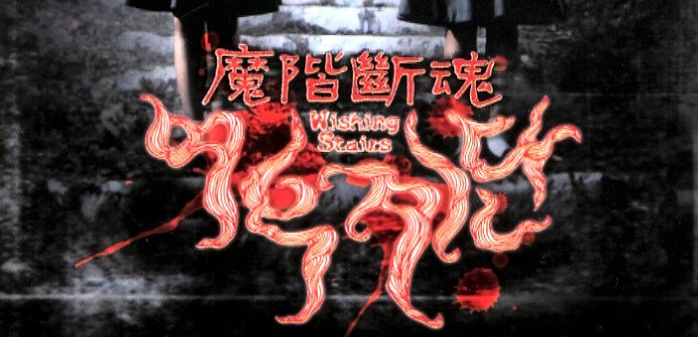Wishing Stairs (2003)
Written By: JR
Edited By: Grave Reviews Staff

Film Information
Director: Jae-Yeon Yun
Producer: Eun-Mi Ahn, Jae-Hong Kim, and Choon-Yeon Lee
Screenwriter: Shin-Ae Lee and Soyoung Lee
Date of release: August 1, 2003
Cast:
Ji-Hyo Song as Yun Jin-Seong
Han-Byeol Park as Kim Sohee
An Jo as Eom Hye-Ju
Ji-Yeon Park as Han Yun-Ji
Rating = 2/5 Graves


***May contain some spoilers***
Synopsis
Jin-Seong aspires to obtain a scholarship to a Russian ballet school granted only to the nimblest ballerinas in the entire boarding school. Unfortunately, Sohee, her best friend, outshines her in every way. Desperate, Jin-Seong resorts to pursuing a local myth, counting all 28 steps of the wishing stairs and hoping that the 29th step will appear so that her wish will be granted. When Sohee suffers a horrible accident, Jin-Seong realizes that she does not have any control over how her wishes get fulfilled.
Gore Factor
The setting of the film is an art school and much of the gore mimes how different kinds of art is done. We catch a student bumping over a bleeding sculpture and the wet mold falls over, revealing a murdered girl covered in clay. The professor grades it an A due to intricate details that makes the sculpture seem alive. Other than that, most scenes feature Sohee’s ghost haunting the old corridors through balletic trots.
As a remembrance of Sohee’s fate and a reckoning of the myth of the wishing stairs, there are a lot of instances that feature people and objects falling down the stairs. The director uses morbid misfortunes to highlight the recurring guilt behind a selfish wish.
The Grave Review
Wishing Stairs (2003) is slow to start yet when it gets going, it has a couple of slick scares. The seemingly empty scenes prepare a warranted space for the ghost’s appearance and revenge. It almost feels like a chick flick or a happy-go-lucky K-drama at first, then it manipulates Sohee’s fondness for Jin-Seong to intimidate the viewers.
The characters are loveable due to their silly quirks. Sohee’s clingy approach towards Jin-Seong radiates tension of young and unrealized love. At heart, they have explored rivalry between friends up to its extent. More so, the vintage arts school is hypnotic in its own, initiating and crushing the fragile dreams of the students.
Set in an all-girls high school, the film has a lot of potential to delve into the issues surrounding women. However, it features fat-shaming and early-stage lesbianism feebly, lacking the intricacy of the female gaze upon the subject matter. Instead, the film focuses on wrapping the story around a superstition. It conspires with the supernatural element by keeping it limited in the beginning and gives it permission to lash out in the near end.
The director has effectively blurred the boundary between reality and fantasy, giving the film an edge to suspend disbelief. This merit is most impressive when Sohee’s obsessive fangirl, Hye-Ju appears to be possessed by her ghost. There is little to no need for special effects, since the actress portraying Hye-ju nailed the doble cara role.
The entire film has a dark and damp coating, establishing a moody tone that matches Jin-Seong’s emotions. What makes the film unconvincing is the shallow dialogue and the limited psychological profile of the characters. Although Wishing Stairs treads on pubescent ambitions, it doesn’t excuse the film from molding half-baked characters.
For the forgoing reasons, Grave Reviews gives Wishing Stairs (2003) two graves out of five graves.
Do you agree with our review? Comment below.

Join the Conversation